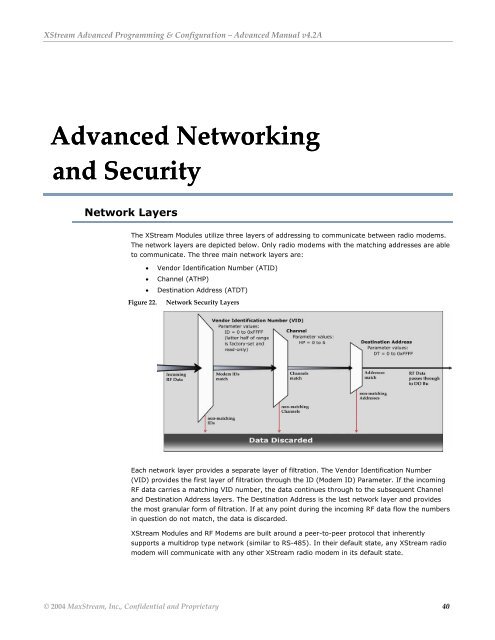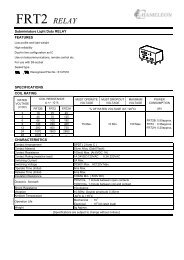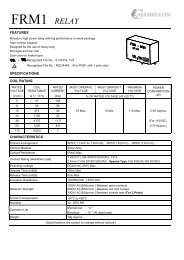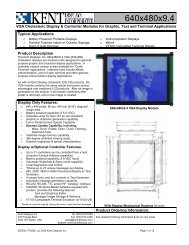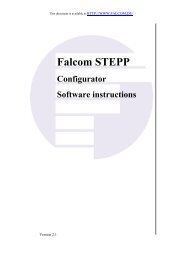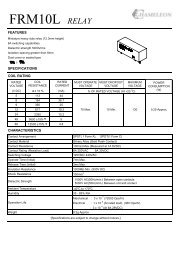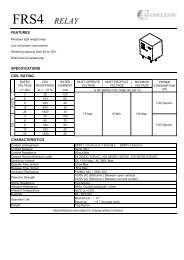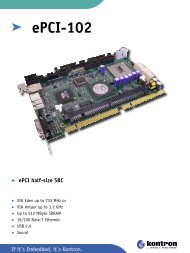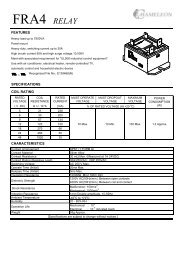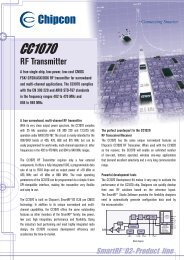XStream⢠Advanced Programming & Configuration
XStream⢠Advanced Programming & Configuration
XStream⢠Advanced Programming & Configuration
Create successful ePaper yourself
Turn your PDF publications into a flip-book with our unique Google optimized e-Paper software.
XStream <strong>Advanced</strong> <strong>Programming</strong> & <strong>Configuration</strong> – <strong>Advanced</strong> Manual v4.2A<br />
<strong>Advanced</strong> Networking<br />
and Security<br />
Network Layers<br />
The XStream Modules utilize three layers of addressing to communicate between radio modems.<br />
The network layers are depicted below. Only radio modems with the matching addresses are able<br />
to communicate. The three main network layers are:<br />
• Vendor Identification Number (ATID)<br />
• Channel (ATHP)<br />
• Destination Address (ATDT)<br />
Figure 22. Network Security Layers<br />
Each network layer provides a separate layer of filtration. The Vendor Identification Number<br />
(VID) provides the first layer of filtration through the ID (Modem ID) Parameter. If the incoming<br />
RF data carries a matching VID number, the data continues through to the subsequent Channel<br />
and Destination Address layers. The Destination Address is the last network layer and provides<br />
the most granular form of filtration. If at any point during the incoming RF data flow the numbers<br />
in question do not match, the data is discarded.<br />
XStream Modules and RF Modems are built around a peer-to-peer protocol that inherently<br />
supports a multidrop type network (similar to RS-485). In their default state, any XStream radio<br />
modem will communicate with any other XStream radio modem in its default state.<br />
© 2004 MaxStream, Inc., Confidential and Proprietary 40


